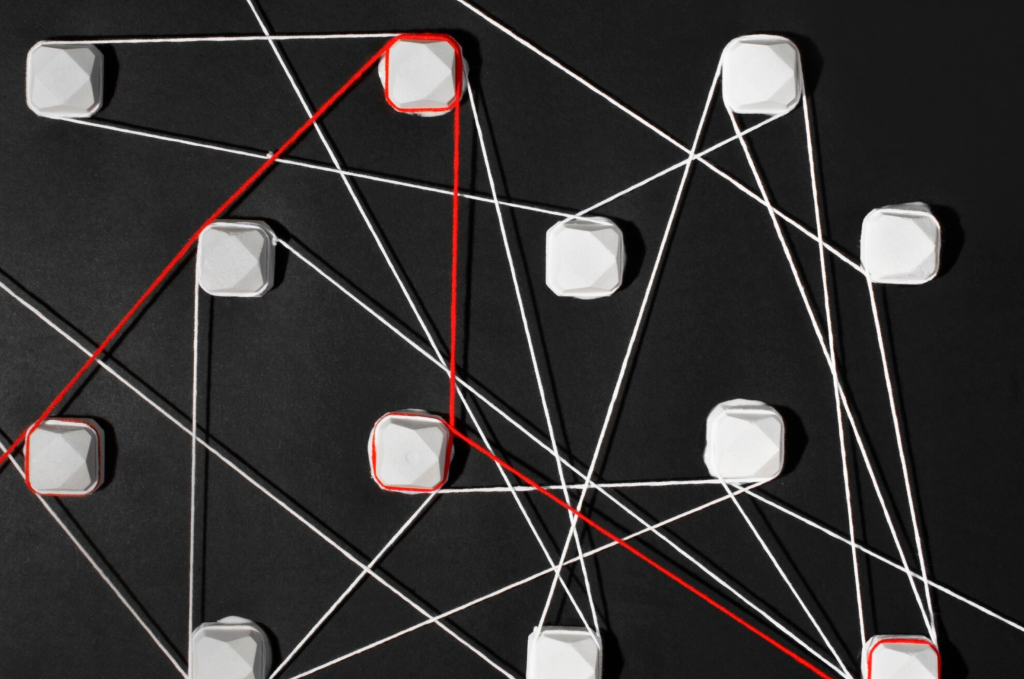🧠 How False Narratives Spread—And What We Can Do About It
We live in a world where information is always just a tap away. But with that access comes a growing problem: online misinformation. Whether it’s false health advice, manipulated videos, or misleading headlines, misinformation travels faster and further than ever before—often outpacing the truth.
In this digital maze, misinformation forms an invisible web, one that’s difficult to see yet deeply influential. It doesn’t just exist in isolated posts or tweets. Instead, it spreads through networks, algorithms, and human psychology—making it much harder to trace or correct.

🌐 What Is Online Misinformation?
Misinformation is false or misleading content shared without intent to harm. It’s different from disinformation, which is deliberately created to deceive. However, both have serious effects on public understanding, behavior, and even democracy.
It can take many forms:
- Misleading statistics
- Out-of-context quotes
- Doctored images
- Clickbait headlines
- Deepfake videos
- AI-generated “news” articles
These distortions often appear in emotionally charged content, making them more likely to be shared—especially on platforms that prioritize engagement over accuracy.
🧩 How Misinformation Spreads: A Digital Web
1. Social Media Algorithms
Social platforms are built to keep users engaged. Their algorithms tend to amplify content that triggers emotion, whether joy, fear, or outrage. Unfortunately, misinformation thrives in this environment because it’s often more sensational than facts.
A study from MIT found that false news spreads six times faster on Twitter than true stories. (Source)
2. Echo Chambers and Filter Bubbles
Over time, algorithms begin feeding users similar content based on past clicks. This creates “filter bubbles” where people are only exposed to views that confirm their beliefs. Misinformation circulates easily within these bubbles, unchecked by outside perspectives.
3. Low Media Literacy
Not everyone is trained to evaluate sources critically. A fake headline or misleading chart might be shared with good intentions, simply because the user didn’t verify it.
🔍 The Hidden Network: Bots, Trolls, and Influencers
Not all accounts online are human—or neutral.
- Bots are automated accounts that can post and amplify false information at scale.
- Troll farms are organized groups that spread divisive content to disrupt public discourse.
- Influencers, even unintentionally, can magnify misinformation by sharing without fact-checking.
All of these players contribute to a networked misinformation system that’s hard to see—but highly effective.
🧠 Why Our Brains Fall for Misinformation
Even the smartest among us can fall victim to false narratives. Why? It comes down to how our brains are wired.
- Cognitive biases: We tend to believe information that confirms what we already think (confirmation bias).
- Repetition effect: The more we hear something—even if it’s false—the more likely we are to believe it.
- Emotional triggers: Scary or shocking content grabs attention and feels urgent, prompting quick shares.
As psychologist Daniel Kahneman explains, “Fast thinking relies on intuition and emotion, making us vulnerable to misinformation.” (Source)
📉 Real-World Impact of Misinformation
Online lies don’t stay online. They spill into the real world with serious consequences:
- Public health risks: False vaccine claims have contributed to disease outbreaks.
- Political polarization: Fake news stories can influence elections and increase division.
- Violence and unrest: Conspiracy theories have sparked real-life protests, harassment, and even attacks.
🧰 Tools and Strategies to Combat Misinformation
So what can we do to break this web? It starts with awareness—and the right tools.
✅ 1. Check the Source
Look beyond the headline. Who published the story? Is it a reputable outlet or a website known for clickbait?
✅ 2. Use Fact-Checking Sites
Before you share, double-check with:
✅ 3. Think Before Sharing
If a post makes you feel angry, scared, or vindicated—pause. Misinformation often uses emotion to cloud judgment.
✅ 4. Educate Yourself
Digital media literacy is key. Learn how to spot manipulated images, biased reporting, and fake profiles.
✅ 5. Report Harmful Content
Most platforms allow you to flag posts that are misleading or harmful. Use these tools to help slow the spread.
🧭 Building a More Informed Digital Future
Online misinformation isn’t going away overnight. But with greater awareness, better education, and responsible sharing, we can make our digital spaces safer and smarter.
Ultimately, it’s not just about protecting ourselves—it’s about protecting the integrity of information itself. Because the truth, while often less flashy, still matters.
📚 References:
- Vosoughi, Roy, et al. “The spread of true and false news online.” Science, 2018. https://www.science.org/doi/10.1126/science.aap9559
- Kahneman, Daniel. Thinking, Fast and Slow. Farrar, Straus and Giroux, 2011.
- Wardle, Claire & Derakhshan, Hossein. “Information Disorder.” Council of Europe Report, 2017.






